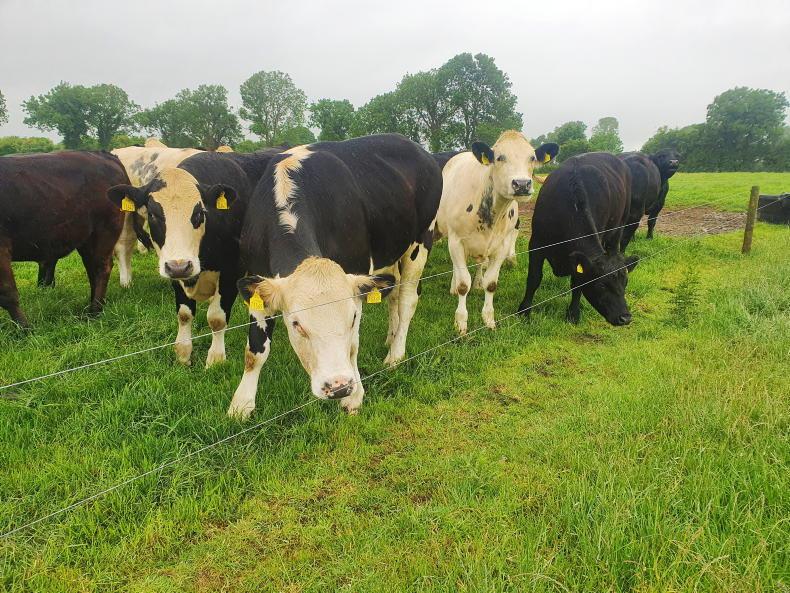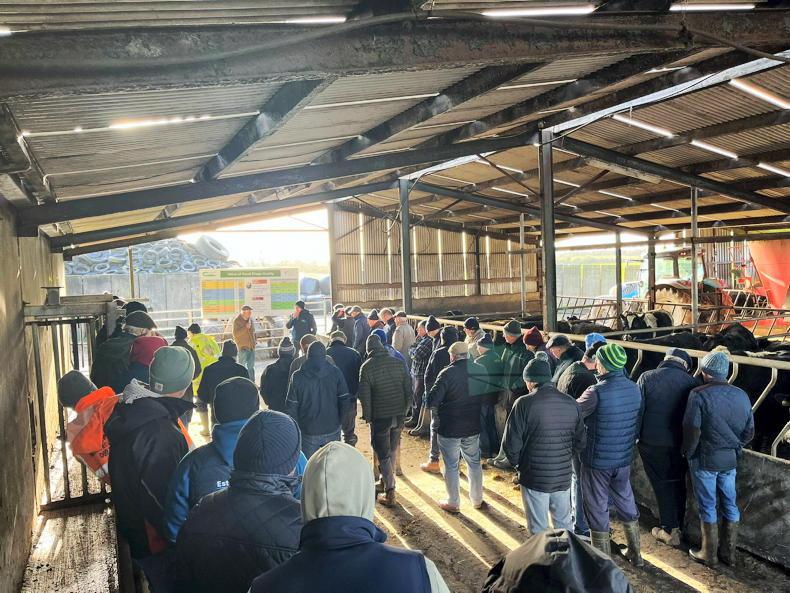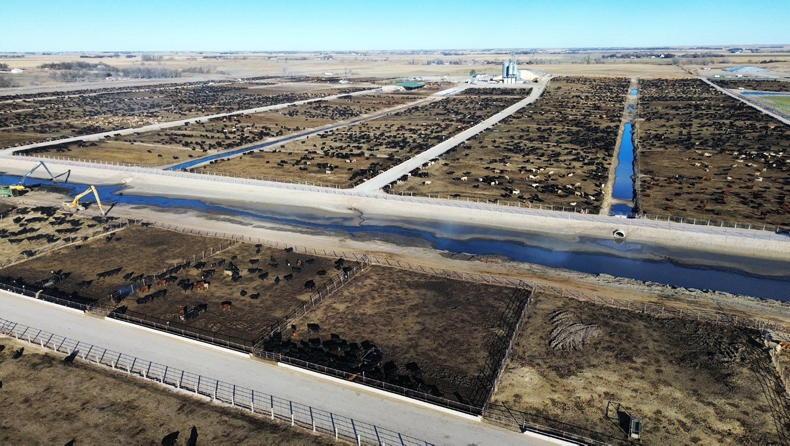Speaking to farmers right around the country this week, the main topic of conversation is grass and grass quality.
Grass growth rates have increased dramatically over the last two weeks, with the average daily grass growth rate hitting over 80kg DM/ha this week.
Many dairy-beef systems would have a daily grass demand of around 40kg DM/ha to 45kg DM/ha.
Therefore, in simple terms, farms are currently growing twice as much grass as they are eating every day.
If you speak to any dairy farmer, they will tell you that the milk collections will be down for a few days following grazing stemmier or poorer-quality grass
Add to this the fact that many grass varieties are reaching their natural heading dates, meaning swards are going to seed, sometimes even at very low grass covers, it makes it difficult to maintain the quality of the sward at this time of year.
If left unmanaged, it will have a negative effect on the overall growth performance of stock at grass.
If you speak to any dairy farmer, they will tell you that the milk collections will be down for a few days following grazing stemmier or poorer-quality grass.
Unfortunately for beef farmers, we do not get this constant feedback, but the negative effect is still there.
The main problem on farms solely operating dairy-beef systems is that all stock are priority stock, so there is no group that can be used to mop-up or graze-out paddocks after the priority group have finished.
Therefore, taking steps to minimise this loss of production is really important.
The first thing to do is to assess the overall situation. To do this, you need to walk the entire farm to see what the grass supply is like.
With daily growth rates in excess of 80kg DM/ha, the picture changes quite fast. Ground grazed two weeks ago will be coming fit for grazing once again.
Once you have walked the farm, make a plan and act on it straight away, as any delay will result in your plan being out of date and a different approach may be needed.
2 Remove surplus grass
as baled silage
Where there is a clear surplus of grass on the farm, the best option is to cut and bale this area.
These bales will be of really high quality and should be stacked somewhere so that they can be used when needed for priority stock during the winter months.

Baling surplus grazing will improve the quality of the regrowth for the next rotation.
Paddocks with heaviest covers should be targeted for cutting. Grazing these swards will result in poor clean-outs and you will end up having to top them post-grazing.
It will also see performance hit, as stock will not do as well grazing out stemmier grass.
Also, grazing these swards adds to the problem of surplus grass on-farm, as the rotation is slowed down while stock try to graze out these paddocks.
This will result in grass in the rest of the rotation getting over-strong for grazing, compounding the problem.
3 Pre-mow grass ahead of stock
This would not be my preferred option, but it can work in some cases.
Being honest, not every farm is going to be able to get a contactor to come in and bale a small number of acres of excess grass when they want them.
On the other hand, some farms that are lower stocked will know that they will have excess bales in the yard for winter as it is from designated silage cuts. Making more bales, which is expensive to do, may seem unrealistic.
It is important to know that performance will more than likely take a hit while grazing these paddocks
Where pre-mowing can work is where there is just a small number of paddocks that have gone a bit strong for grazing. Grass can be mown 24-hours prior to grazing.
Strip grazing works best in this situation, with the fence being moved twice a day, as it maximises the utilisation of grass.
It is important to know that performance will more than likely take a hit while grazing these paddocks, as you are forcing the animal to eat the stemmier grass.
However, what works in its favour is that the dry matter of the grass they are consuming will be higher with mown grass compared with if they were grazing a growing plant.
Therefore, the overall dry matter intake of the animal may in fact increase slightly, minimising any production losses.
As with the previous option, this will leave a nice clean regrowth for the next grazing rotation.
Topping always divides farmers’ opinions. However, I feel it can play an important role at this time of year in order to maintain grazing quality for the rest of the season.
These few weeks from mid-June to the end of the month are the period when topping will have to be carried out.

Grass swards heading out at low covers in mid-June.
Even with the very best of grassland management, it is nearly impossible to maintain grazing quality on every paddock on the farm at this time of year.
Topping should take place as soon as the stock are taken out of the field so as not to hit any regrowth, as this can have a negative effect.
Some farmers will top fields the day before the cattle move to allow them to eat the topped grass.
This is fine, but, again, be aware that growth rates are going to suffer if stock are forced to graze stemmier grass.
I don’t like the term topping, as it implies that just the top of the grass is being cut. In order for it to be useful, you need to be bringing the grass plant down to a 4cm sward height after mowing.
Flail toppers will often cut too high, taking the seed heads off, but not getting down low enough to ensure a high-quality regrowth for the next grazing. Disc mowers are the best option here.
When grass growth rates are high, farmers often decide to skip nitrogen applications, as growth is more than sufficient.
However, spreading a low level of nitrogen can help maintain grass quality, as it will reduce the likelihood of the grass plant from heading out.
On low- to medium-stocked farms, this can be spread at around 15 units/ac post-grazing. On farms where swards have a decent level of clover, this will not be required.
Grass growth rates are double grazing demand on many farms at the moment.Steps need to be taken to maintain grazing quality ahead of stock.Walk the farm to get an idea of grass supply on-farm.Where there is a lot of surplus grass on-farm, cut some for high-quality baled silage.Try to shorten the number of days in the grazing rotation during periods of high growth.Swards currently being grazed may need to be topped to increase quality for the next grazing. Continue to spread nitrogen to help maintain grass quality.
Speaking to farmers right around the country this week, the main topic of conversation is grass and grass quality.
Grass growth rates have increased dramatically over the last two weeks, with the average daily grass growth rate hitting over 80kg DM/ha this week.
Many dairy-beef systems would have a daily grass demand of around 40kg DM/ha to 45kg DM/ha.
Therefore, in simple terms, farms are currently growing twice as much grass as they are eating every day.
If you speak to any dairy farmer, they will tell you that the milk collections will be down for a few days following grazing stemmier or poorer-quality grass
Add to this the fact that many grass varieties are reaching their natural heading dates, meaning swards are going to seed, sometimes even at very low grass covers, it makes it difficult to maintain the quality of the sward at this time of year.
If left unmanaged, it will have a negative effect on the overall growth performance of stock at grass.
If you speak to any dairy farmer, they will tell you that the milk collections will be down for a few days following grazing stemmier or poorer-quality grass.
Unfortunately for beef farmers, we do not get this constant feedback, but the negative effect is still there.
The main problem on farms solely operating dairy-beef systems is that all stock are priority stock, so there is no group that can be used to mop-up or graze-out paddocks after the priority group have finished.
Therefore, taking steps to minimise this loss of production is really important.
The first thing to do is to assess the overall situation. To do this, you need to walk the entire farm to see what the grass supply is like.
With daily growth rates in excess of 80kg DM/ha, the picture changes quite fast. Ground grazed two weeks ago will be coming fit for grazing once again.
Once you have walked the farm, make a plan and act on it straight away, as any delay will result in your plan being out of date and a different approach may be needed.
2 Remove surplus grass
as baled silage
Where there is a clear surplus of grass on the farm, the best option is to cut and bale this area.
These bales will be of really high quality and should be stacked somewhere so that they can be used when needed for priority stock during the winter months.

Baling surplus grazing will improve the quality of the regrowth for the next rotation.
Paddocks with heaviest covers should be targeted for cutting. Grazing these swards will result in poor clean-outs and you will end up having to top them post-grazing.
It will also see performance hit, as stock will not do as well grazing out stemmier grass.
Also, grazing these swards adds to the problem of surplus grass on-farm, as the rotation is slowed down while stock try to graze out these paddocks.
This will result in grass in the rest of the rotation getting over-strong for grazing, compounding the problem.
3 Pre-mow grass ahead of stock
This would not be my preferred option, but it can work in some cases.
Being honest, not every farm is going to be able to get a contactor to come in and bale a small number of acres of excess grass when they want them.
On the other hand, some farms that are lower stocked will know that they will have excess bales in the yard for winter as it is from designated silage cuts. Making more bales, which is expensive to do, may seem unrealistic.
It is important to know that performance will more than likely take a hit while grazing these paddocks
Where pre-mowing can work is where there is just a small number of paddocks that have gone a bit strong for grazing. Grass can be mown 24-hours prior to grazing.
Strip grazing works best in this situation, with the fence being moved twice a day, as it maximises the utilisation of grass.
It is important to know that performance will more than likely take a hit while grazing these paddocks, as you are forcing the animal to eat the stemmier grass.
However, what works in its favour is that the dry matter of the grass they are consuming will be higher with mown grass compared with if they were grazing a growing plant.
Therefore, the overall dry matter intake of the animal may in fact increase slightly, minimising any production losses.
As with the previous option, this will leave a nice clean regrowth for the next grazing rotation.
Topping always divides farmers’ opinions. However, I feel it can play an important role at this time of year in order to maintain grazing quality for the rest of the season.
These few weeks from mid-June to the end of the month are the period when topping will have to be carried out.

Grass swards heading out at low covers in mid-June.
Even with the very best of grassland management, it is nearly impossible to maintain grazing quality on every paddock on the farm at this time of year.
Topping should take place as soon as the stock are taken out of the field so as not to hit any regrowth, as this can have a negative effect.
Some farmers will top fields the day before the cattle move to allow them to eat the topped grass.
This is fine, but, again, be aware that growth rates are going to suffer if stock are forced to graze stemmier grass.
I don’t like the term topping, as it implies that just the top of the grass is being cut. In order for it to be useful, you need to be bringing the grass plant down to a 4cm sward height after mowing.
Flail toppers will often cut too high, taking the seed heads off, but not getting down low enough to ensure a high-quality regrowth for the next grazing. Disc mowers are the best option here.
When grass growth rates are high, farmers often decide to skip nitrogen applications, as growth is more than sufficient.
However, spreading a low level of nitrogen can help maintain grass quality, as it will reduce the likelihood of the grass plant from heading out.
On low- to medium-stocked farms, this can be spread at around 15 units/ac post-grazing. On farms where swards have a decent level of clover, this will not be required.
Grass growth rates are double grazing demand on many farms at the moment.Steps need to be taken to maintain grazing quality ahead of stock.Walk the farm to get an idea of grass supply on-farm.Where there is a lot of surplus grass on-farm, cut some for high-quality baled silage.Try to shorten the number of days in the grazing rotation during periods of high growth.Swards currently being grazed may need to be topped to increase quality for the next grazing. Continue to spread nitrogen to help maintain grass quality. 











SHARING OPTIONS